2021 Subaru Forester Premium vs Hyundai Tucson 1.6T Ltd AWD comparison
Medium SUVs continue to run hot and herein we have two disparate offerings, new Tucson the townie’s choice, and revised...
It’s a given that a manufacturer’s best seller is an SUV these days. For Mazda, that’s the CX-5, both globally and locally. The model was the first to launch Mazda’s new generation line-up with a common platform and a fresh styling direction. In 2017, the second gen CX-5 came along which refined the recipe and the sales kept racking up. Mazda has given the nameplate a recent refresh, tweaking the look, adding yet more refinement and tinkering with the model line-up. A new option for the CX-5 buyer is the Activ. It’s the one for those who are busy adventuring, and so don’t have time to spell Active properly. Whatever, all new CX-5s wear a reprofiled front bumper with a restyled grille (featuring a 3D design that replaces the usual old mesh) to help it appear wider, more planted, while the front and rear lights have been redesigned with LED lamps. The Activ features a silver treatment to the bumpers, black door mirrors and a lime green accent in the grille. The same green features inside on the air con vents and the stitching for the suede upholstery.
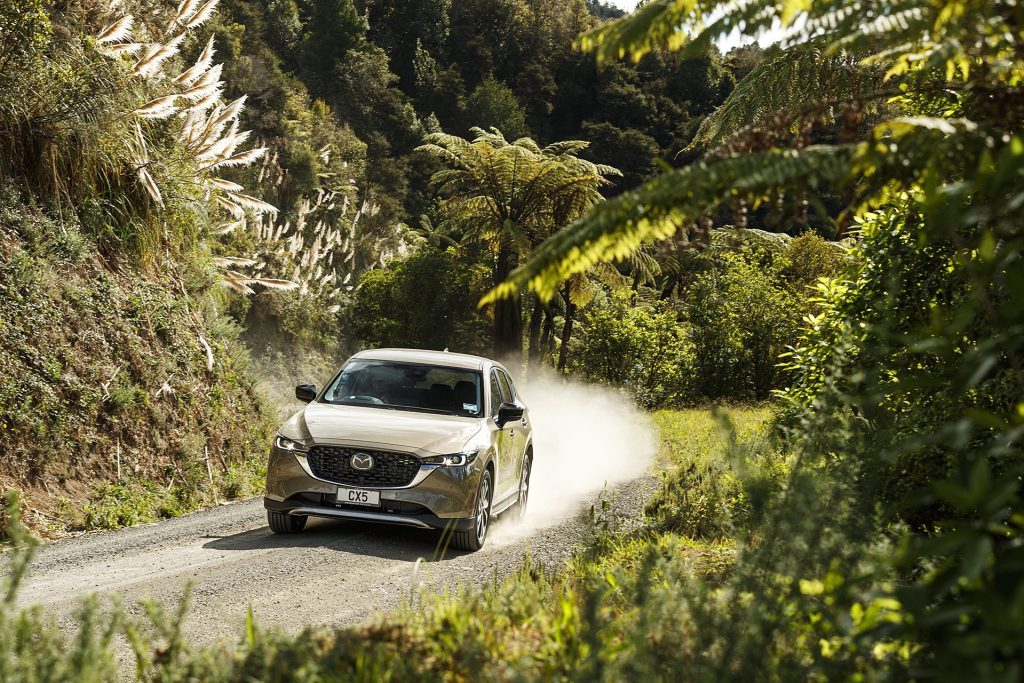
This wears the CX-5’s new hero colour, Zircon Sand, inspired by foundry castings. It’s a colour that’s light dependent; it can look matt green one minute and metallic gold the next. We found some like it, some not so much.
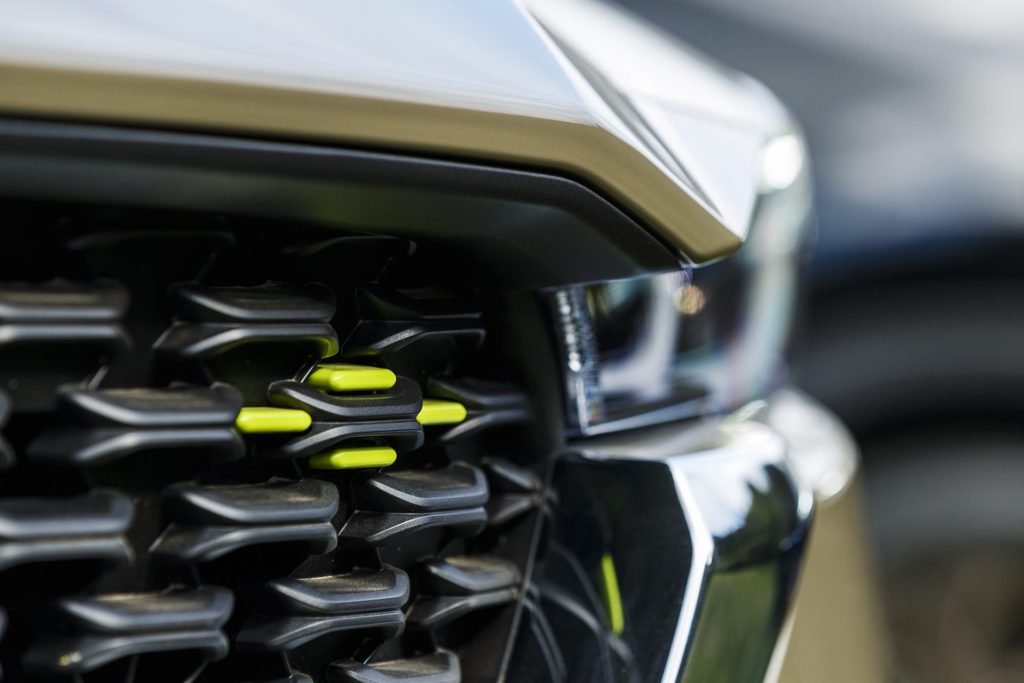
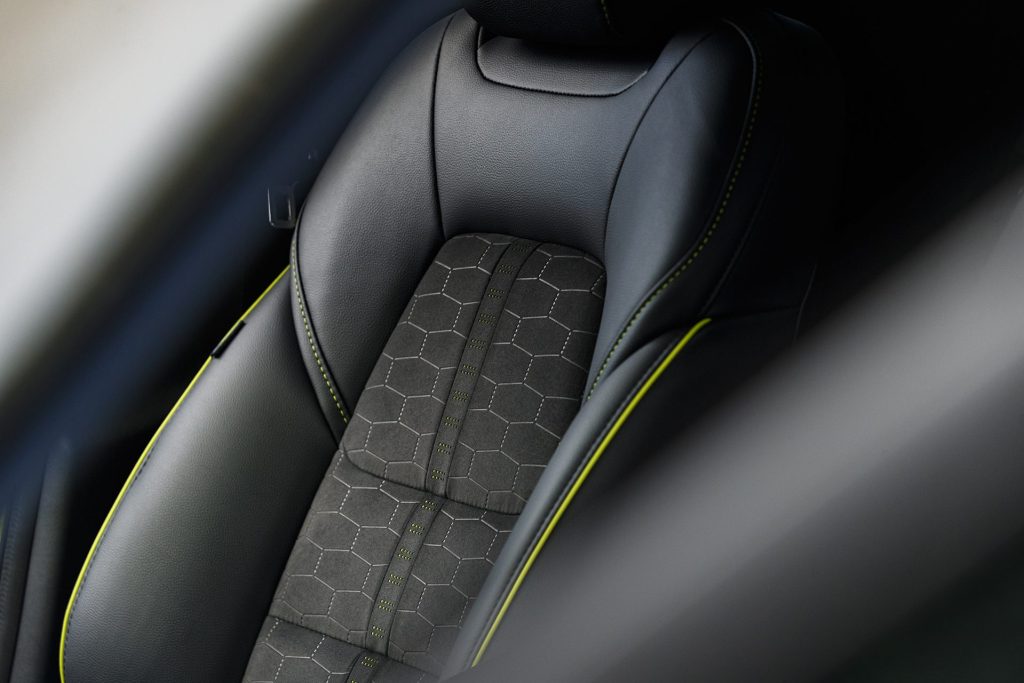
The CX-5 line-up starts at $42,290 for the FWD 2.0 GLX, the Activ sitting just above the mid-range GSX at $50,990 and the top Takami 2.5T is $64,290. The turbo models now attract a CCD fee of $1552, while the rest are neutral. And you can no longer buy a diesel, demand all but dead.
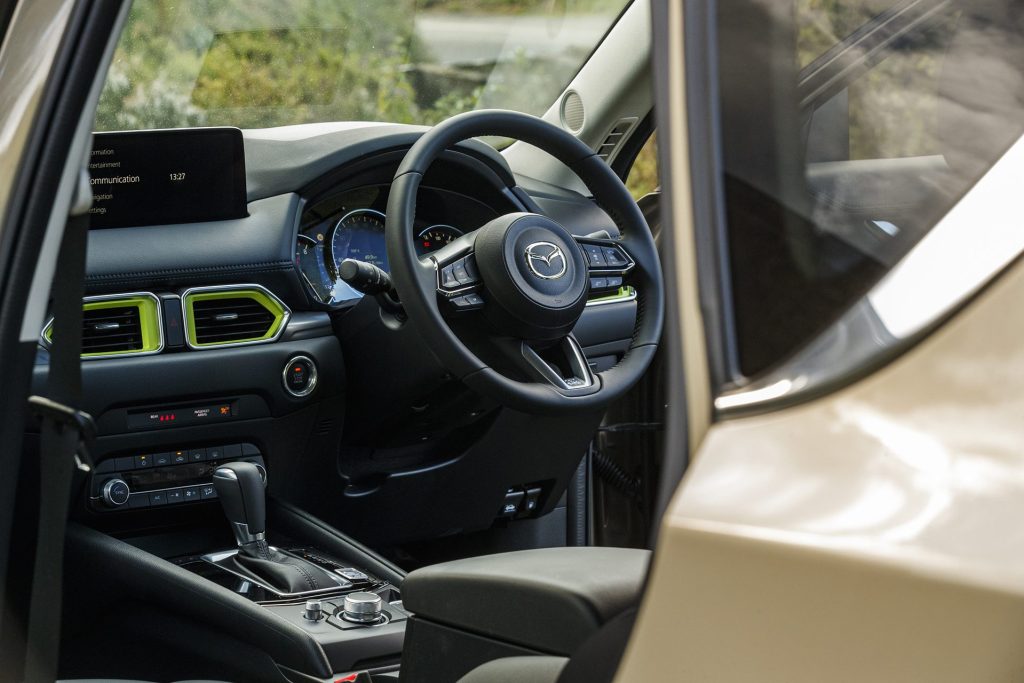
Given the Activ is aimed at the ‘active lifestyler’, we thought we’d measure the new model against the Subaru Forester X Sport, a model that also dons colourful highlights to attract ‘adventure seekers’ and is similarly priced at $47,990.
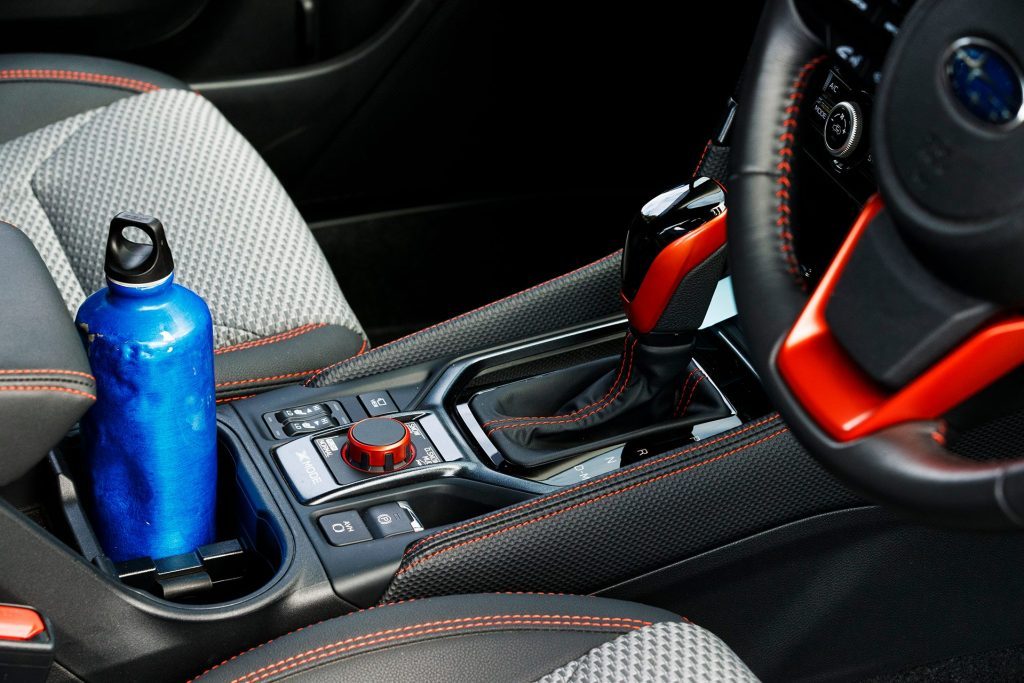
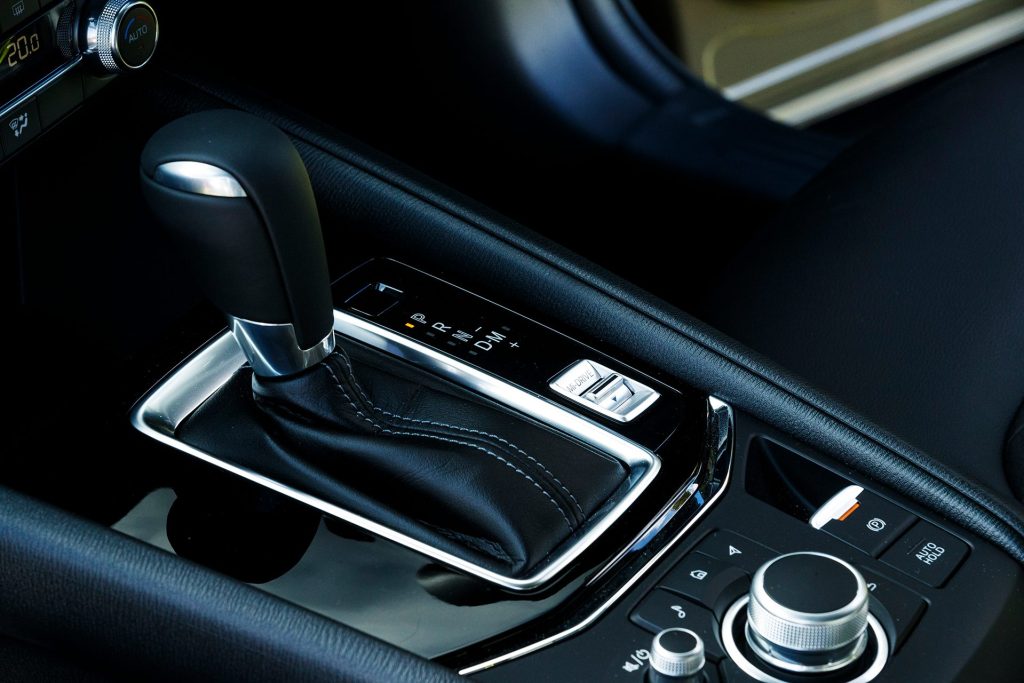
They measure up on many fronts, both with a 2.5-litre naturally aspirated engines offering similar outputs (both horsepower and emissions) and two-pedal transmissions. As such, there’s nothing much between them in terms of driveline performance around town, each with enough torque below 3000rpm to mooch about happily. The general smoothness of the Forester’s CVT is notable; Subaru has perfected this transmission over the years and it works well. Some simply prefer an auto however, as that’s what they know and the Mazda’s six-speeder is a slick operator. As to fuel use, both are rated at 8.2L/100km on average and are satisfied with a diet of 91 octane. On test, the Forester’s average settled in the low 10L/km range, the CX-5, a few points higher in the mid tens.
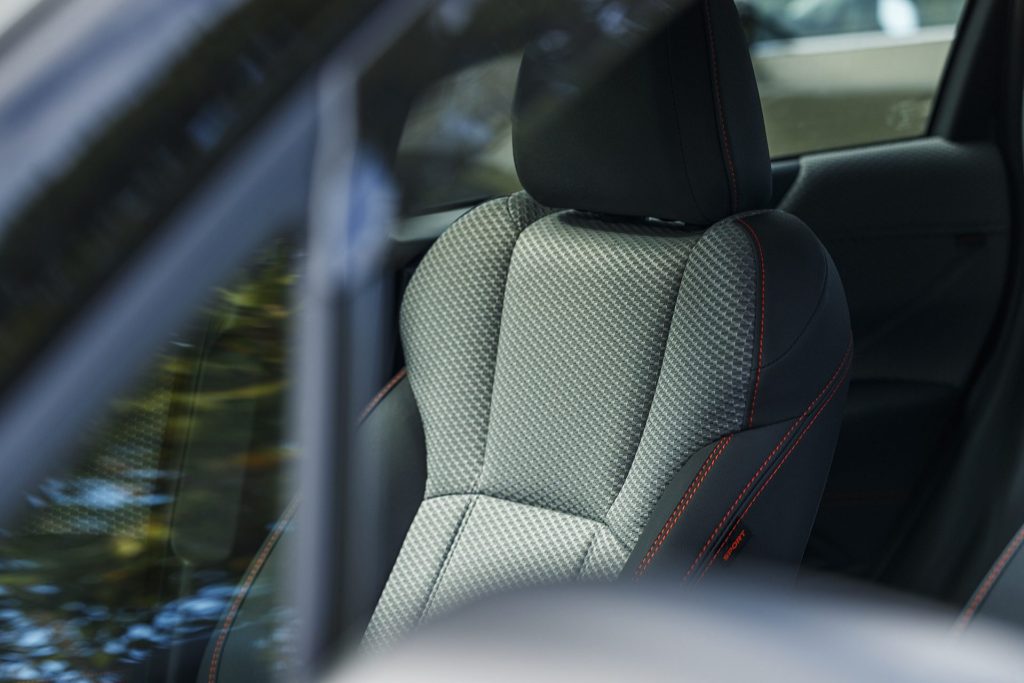
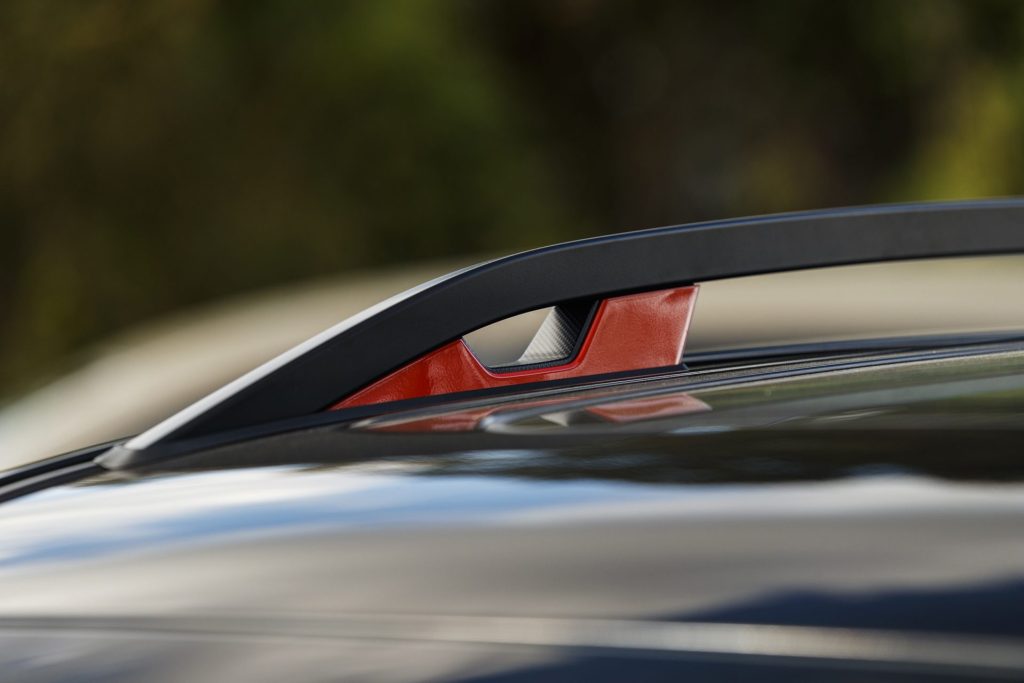
Mazda has made a few chassis improvements to add rigidity which in turn leads to improvements in NVH and ride characteristics. On the latter they say they have tweaked the spring rates to help improve the ride quality, though compared with the Forester it’s still not quite as smooth at an urban gait. It’s quiet though, the work on noise suppression having paid off with the driveline more hushed than the Subaru’s and tyre-related din kept to a minimum.
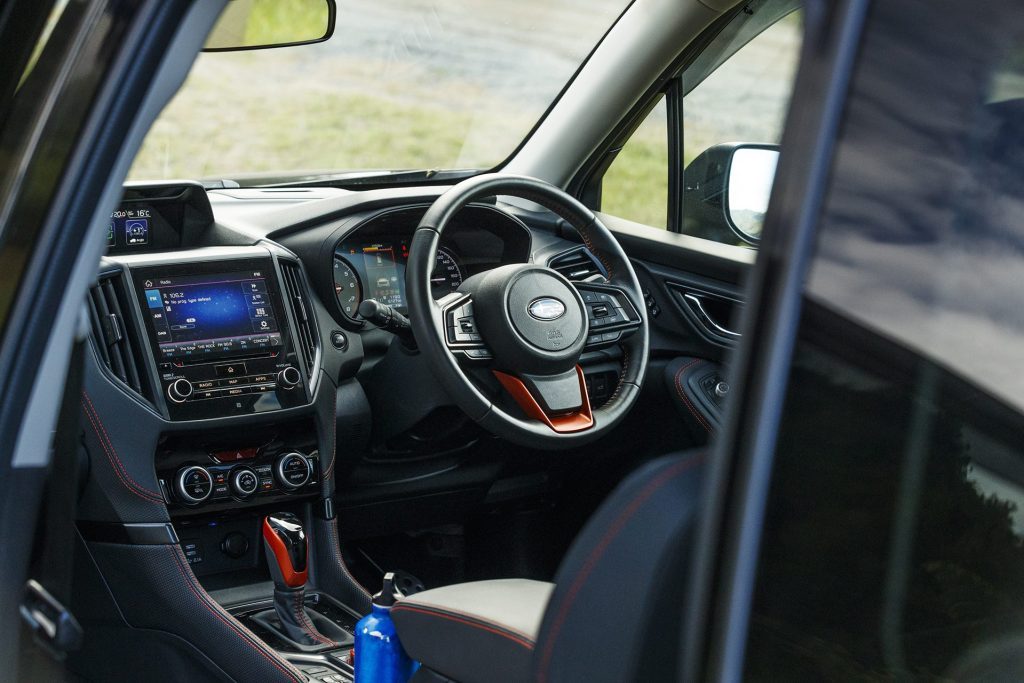
Both do a decent job of highway work, the Subaru’s wider ratio spread helping it cruise at 100km//h with 1500rpm showing, the Mazda at 2000rpm. Both ‘kick down’ quickly for an overtake, the Mazda a little slower 80-120km/h as the gap between ratios is pronounced, whereas the CVT is better at keeping the boxer four on the boil. With peak torque registering around the 4000rpm for both, this is where they perform best. The Subaru’s powertrain response improves markedly in the S mode, though isn’t too racy, while the Mazda is best left in its default Normal setting, where it performs admirably. The Sport mode is for when you’re in a real hurry.
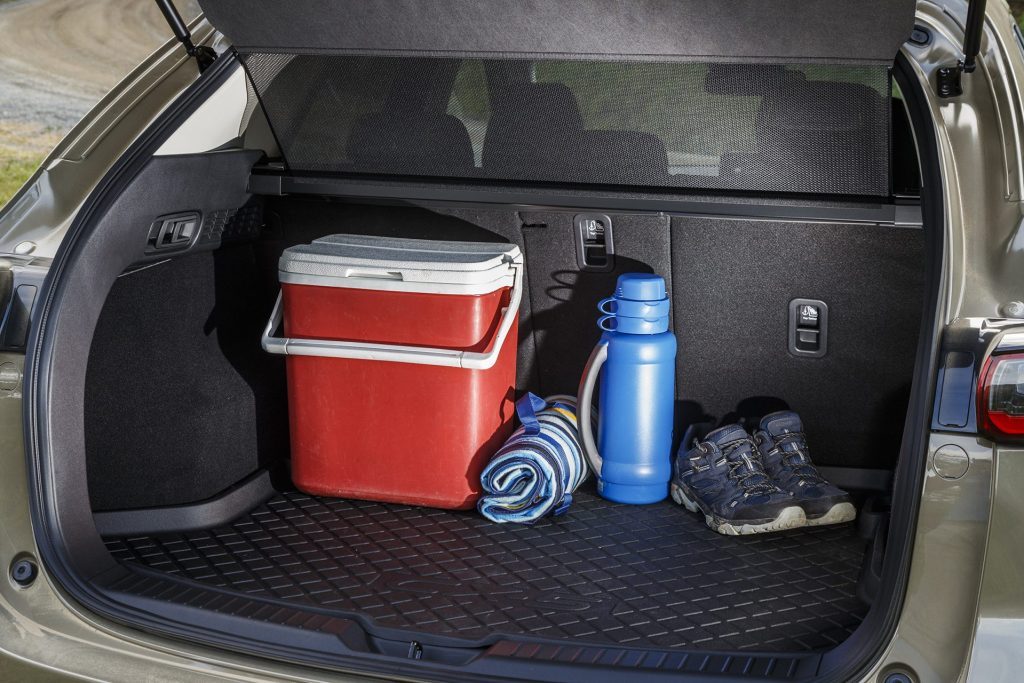
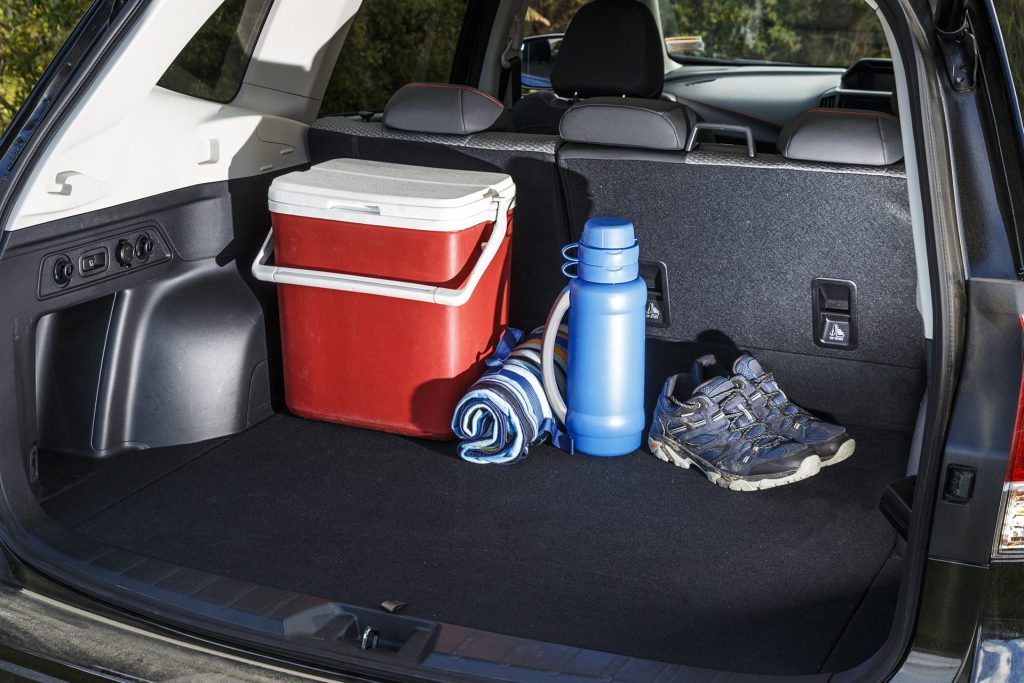
Where the Mazda really shines is behind the wheel with better steering characteristics, including its cultured assistance and a more immediate turn in. The Subaru is not as well connected in this regard. The roll control is better in the Mazda too, and while that damping is a tad firmer, it is rather adept at numbing the bumps at speed, providing a settled ride for those on board. And when pressed through the bends, the chassis finessers are more astute in the Mazda.
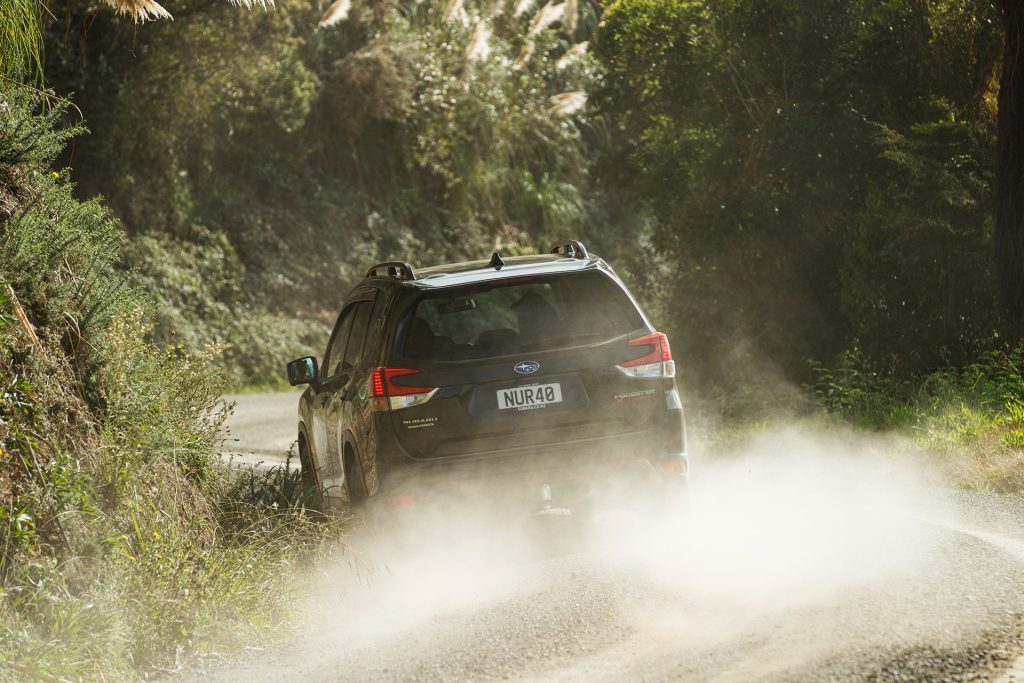
Forester runs a permanent AWD set-up with an active torque split while the Mazda uses the more usual on-demand AWD set-up. The CX-5 Activ gains an Off Road mode that sends a constant feed to the rear wheels to improve traction. On gravel, the long travel suspension of the Forester sees it soak up all in its path, especially those pesky corrugations, helped by its permanent all-wheel drive. The Activ’s off-road mode does as it suggests and there’s plenty of drive for the Mazda through deep gravel. And so both cut a confident, secure path along metal trails. The Subaru’s X-Mode only works below 40km/h, and is intended for more challenging, slippery terrain. The Forester’s added ground clearance, and better approach angles, see it bump over more serious obstacles if you intend to go slightly further off road.
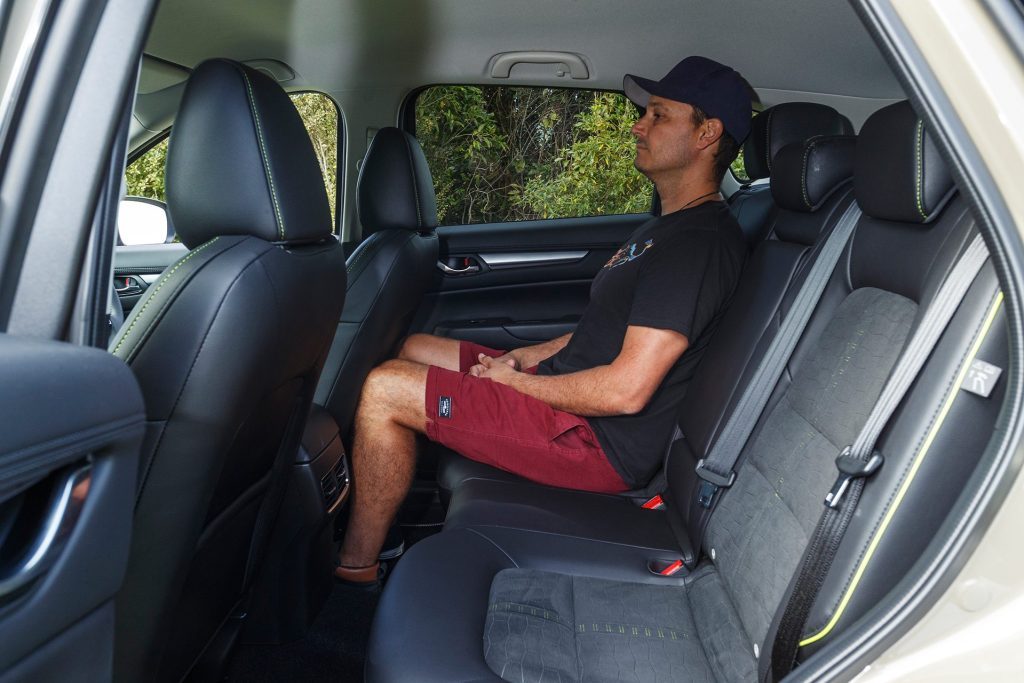
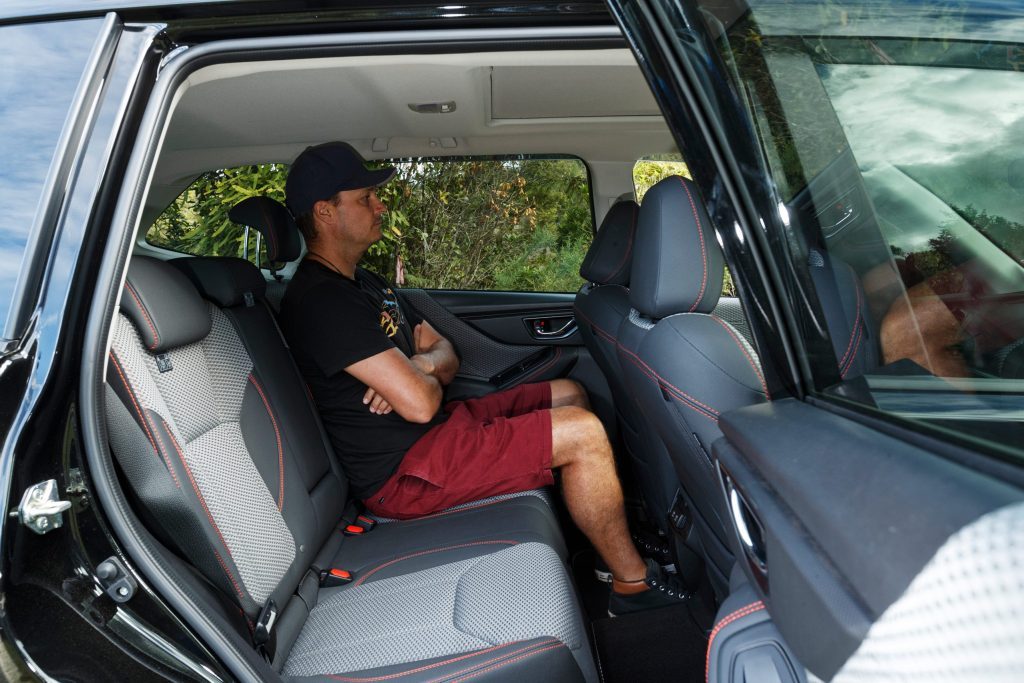
Back in the suburbs, each has the usual convenience features for an easier time behind the wheel, though there are more of them in the better specified Subaru. The Forester has a superior parking camera, complete with backing guidelines lacking in the Mazda that help it line up spaces easier. And there’s also a forward-facing and side-view camera that take all the guesswork out of parking. The turning circle is slightly better in the Forester, and the outward vision superior thanks to a bigger glasshouse that helps the cabin feel airier.
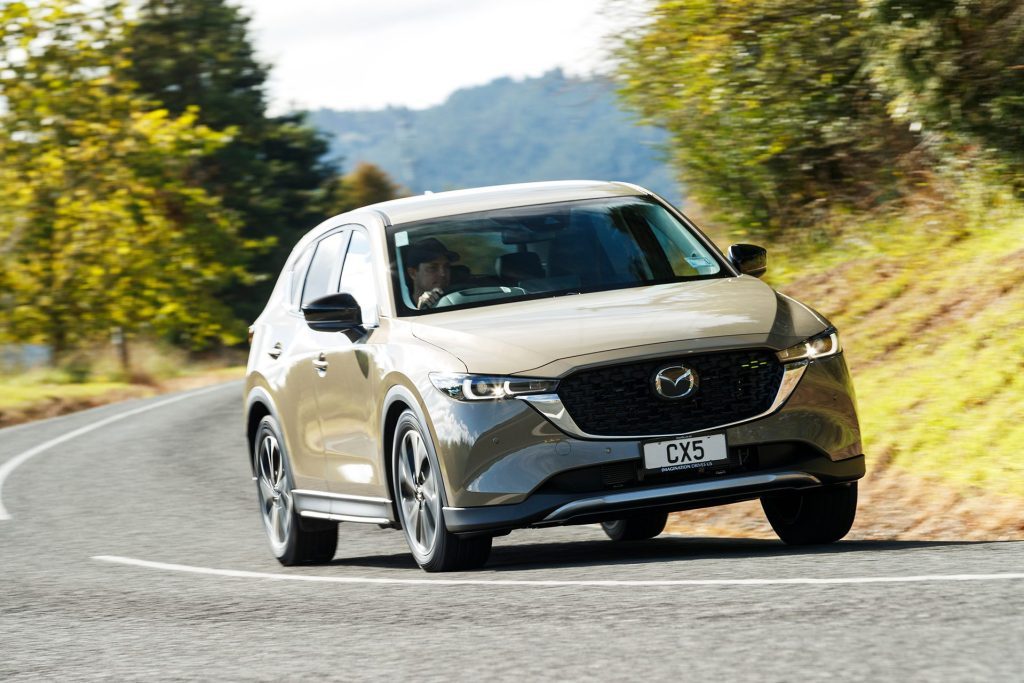
There’s a new seat in the Mazda, intended to maintain a better posture while driving but the manual adjustment means it’s harder to find your ideal posi. The Subaru has a decent seat and is easier to adjust being powered, the memory function a boon if you share the driver’s seat. And they are heated.
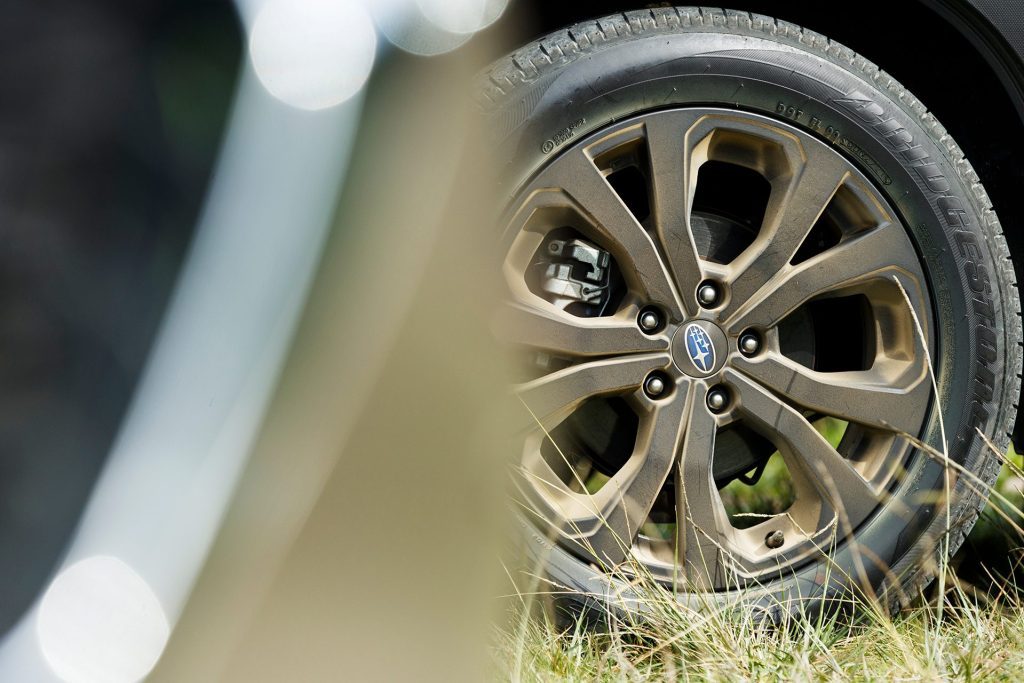
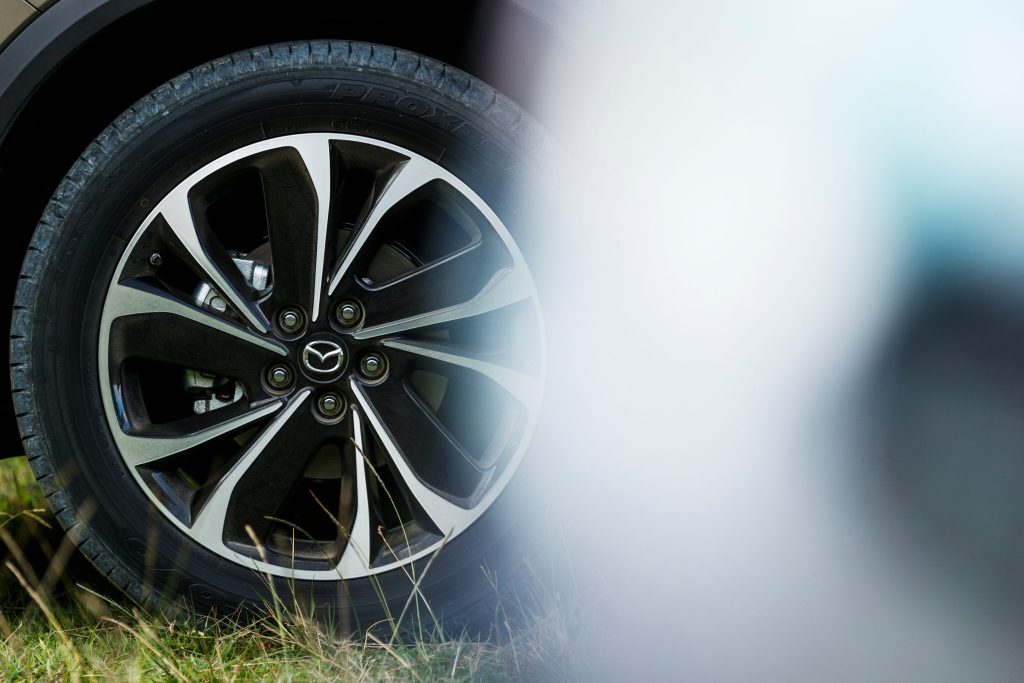
Cabin design is busier in the Subaru with more screens, switches, material types and finishes. It does have more soft touch points than the Mazda but the CX-5 has the more cohesive style, save for those awkward looking green highlights, and it feels better made. The new wide-screen display is clear and crisp, and still driven via a controller on the centre console. This might not be quite as simple to use as a touchscreen but the Mazda system now responds promptly, the hard buttons helping navigate between menus, as they do with the Subaru’s touchscreen.
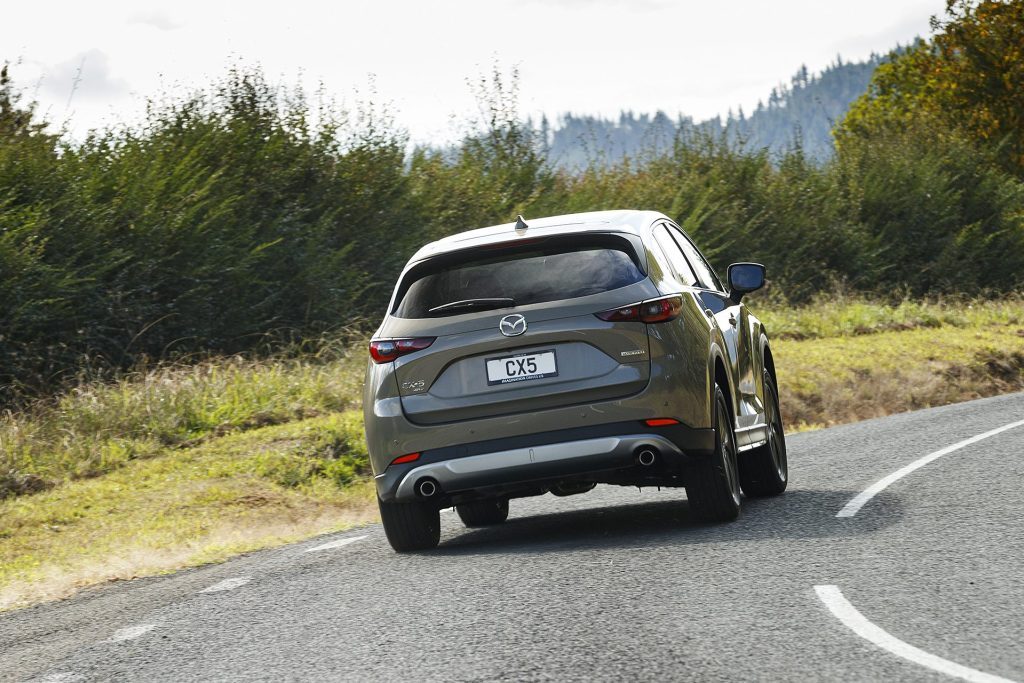
Both have enough practical storage and well sighted and sized cupholders, though you’ll find more passenger space in the rear of the Subaru, a reclining seat back adding to comfort levels, and there is superior headroom, despite the presence of a big sunroof. Forester adds two USB charge ports back there too.
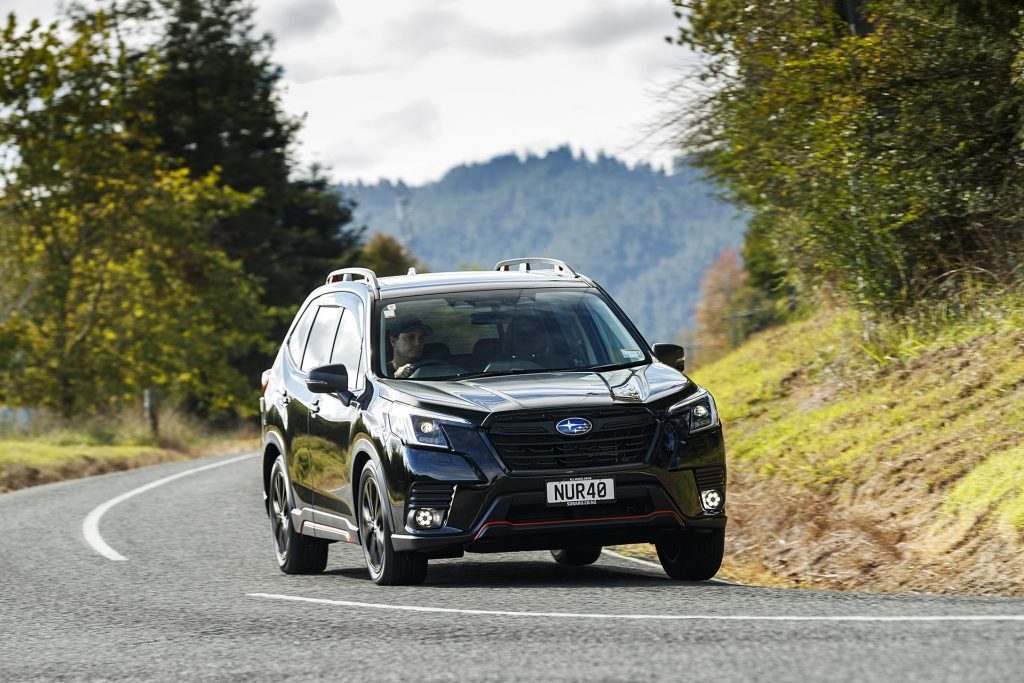
While both have the usual Isofix points in the rear, the Subaru’s middle seat belt hangs from the roof, which is fiddly to set up. The Forester’s liftback is powered and opens up to reveal more usable space thanks to its larger floor area. Both have handy remote levers to flatten the rear seats for bigger loads, although the function is hindered somewhat in the Subaru if you have that centre belt plugged in. There’s a full size spare in the Subaru, a space saver in the Mazda and both haul up to 1800kg braked.
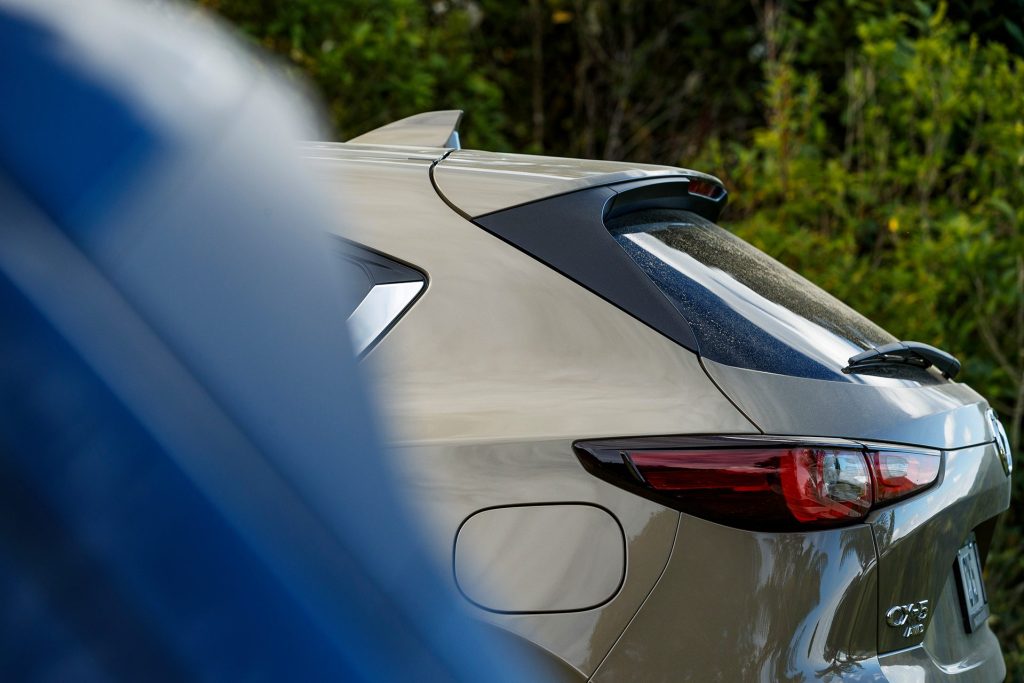
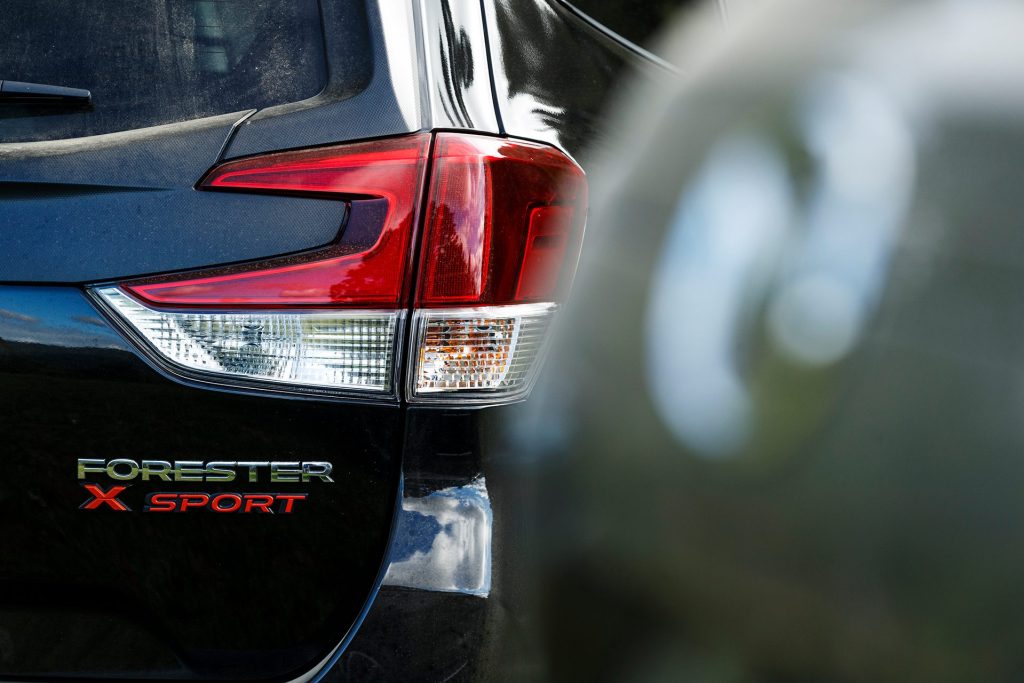
Figure on plenty of safety minders in the Subaru, some helpful others annoying, like the Driver Monitor that is forever beeping at you to keep your eyes on the road. The lane centring function is probably helpful on straight, American roads but it’s too heavy handed in its operation for NZ byways. These all can be tuned to your liking however, or turned off. The Mazda adds a head-up display, which has a discreet warning when things are approaching alongside in your blindspot, while steering assistance has been added to the active cruise which functions below 55km/h.
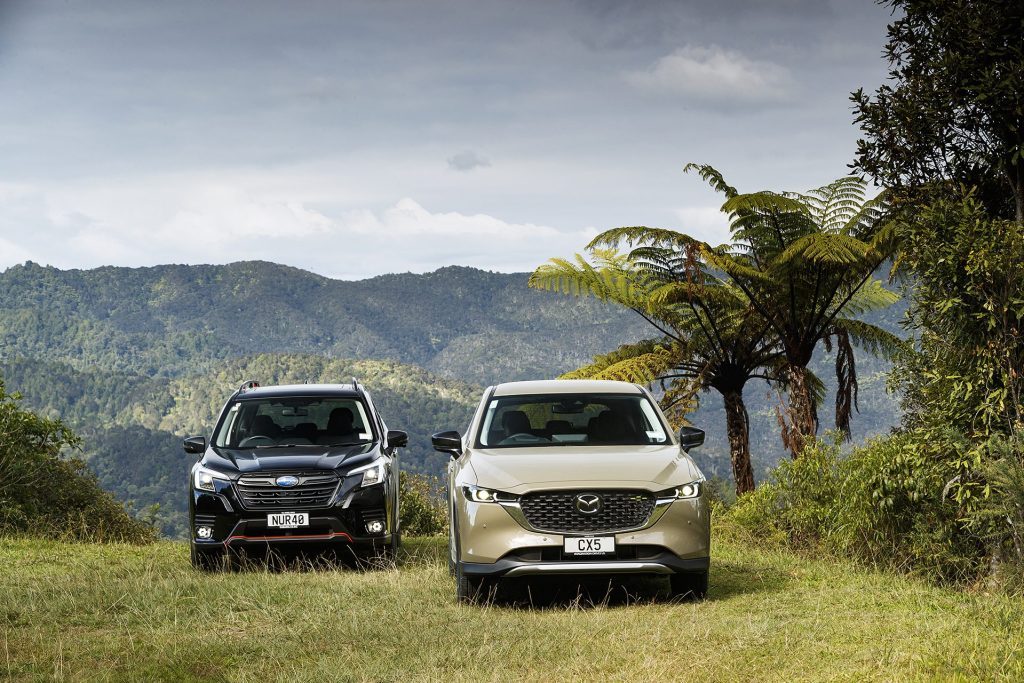
While more expensive, the price of the Mazda does include three years/100,000km of servicing and a five-year, unlimited kay warranty. And you’d opt for the CX-5 for its styling and its driving characteristics; it’s still hard to beat in this market segment. But the better choice for the active type is the Forester with its added features, its more family friendly dimensions and general competence in everything it does.
| Model | Mazda CX-5 Activ |
| Price | $50,990 |
| Clean Car Discount | Neutral $0 |
| Engine | 2488cc, IL4, DI |
| Power/Torque | 140kW/252Nm |
| Drivetrain | 6-speed auto, on-demand AWD |
| Fuel Use | 8.2L/100km |
| C02 Output | 191g/km |
| 0-100km/h | 8.95sec |
| 80-120km/h | 6.35sec (180m) |
| 100-0km/h | 35.89m |
| Stability systems | ABS, ESP, TV |
| Safety | AEB, ACC, BSM, LDW, RCTA, ALK, AHB |
| Luggage Capacity | 438-1304L |
| Tow rating | 750kg (1800kg braked) |
| Service intervals | 12 months/15,000km |
| Scheduled servicing | 3 years/100,000km |
| Warranty | 5 years/unlimited km |
| ANCAP rating | 5 stars |
| Weight | 1693kg (claimed) |
| Model | Subaru Forester X Sport |
| Price | $47,990 |
| Clean Car Discount | Neutral $0 |
| Engine | 2498cc, F4, DI |
| Power/Torque | 136kW/239Nm |
| Drivetrain | CVT, AWD |
| Fuel Use | 8.2L/100km |
| C02 Output | 187g/km |
| 0-100km/h | 9.10sec |
| 80-120km/h | 6.30sec (178m) |
| 100-0km/h | 37.08m |
| Stability systems | ABS, ESP, TV |
| Safety | AEB, ACC, BSM, LDW, RCTA, ALK, AHB |
| Luggage Capacity | 498-1768L |
| Tow rating | 750kg (1800kg braked) |
| Service plan | $999, 22 months/15,000km |
| Scheduled servicing | 3 years/45,000km |
| Warranty | 3 years/150,000km |
| ANCAP rating | 5 stars |
| Weight | 1586kg (claimed) |
You may also like…
Medium SUVs continue to run hot and herein we have two disparate offerings, new Tucson the townie’s choice, and revised...
These SUVs are Kiwi favourites at present, swarming in the most popular area of the market. We gather four of...

